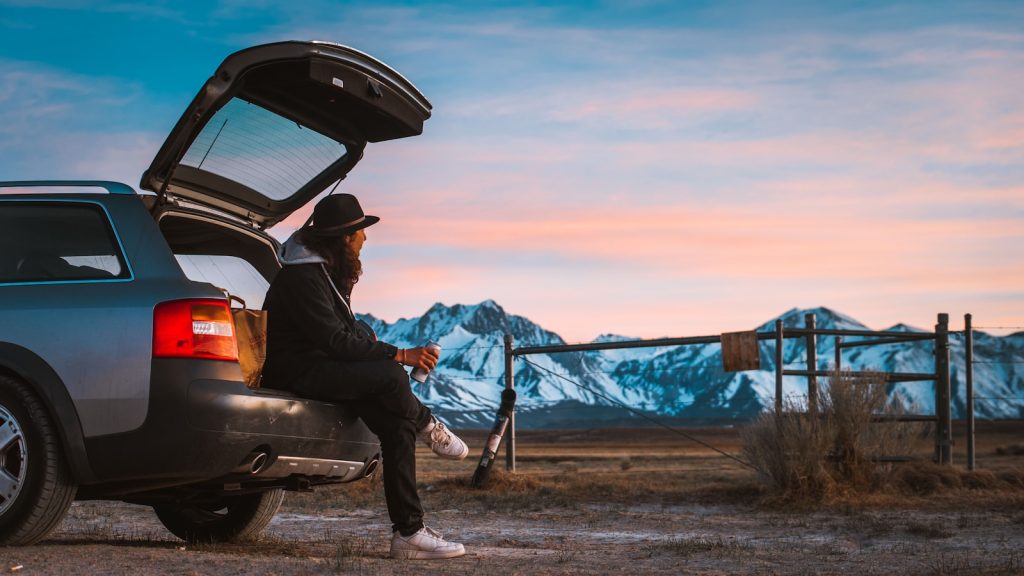
Car Camping for Beginners: Tips and Tricks for a Successful Trip
We may earn money or products from the companies mentioned in this post.
Car camping is a great way to experience the great outdoors without sacrificing the comforts of home. It allows you to explore new places, connect with nature, and create memories with family and friends. However, car camping for beginners can be overwhelming unless you know where to start.
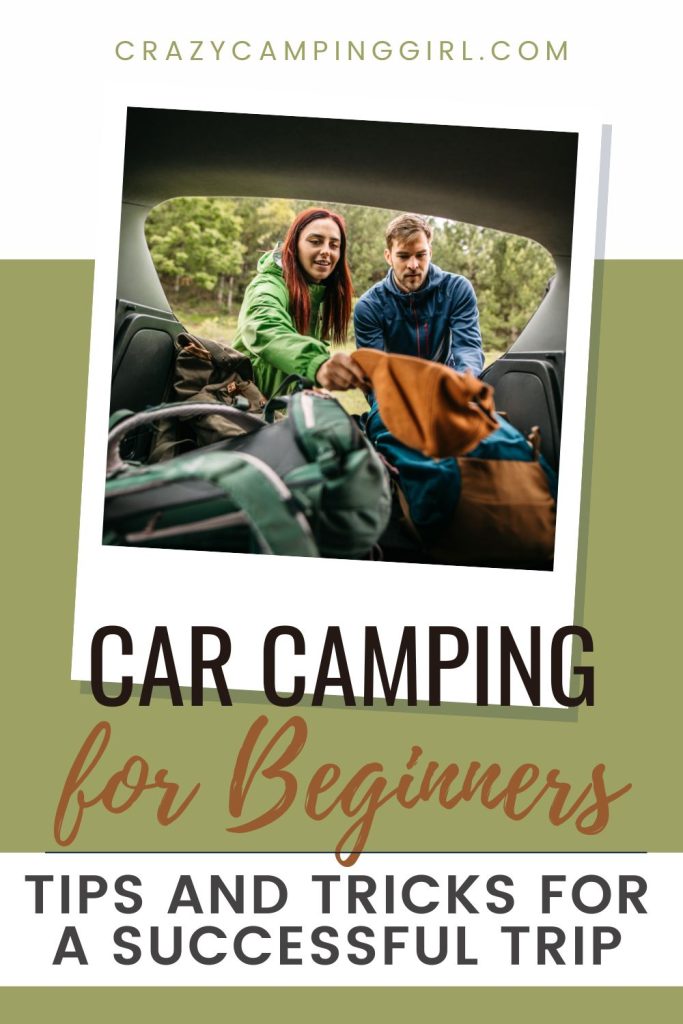
Fortunately, car camping is a great way to dip your toes into the camping world. Unlike backpacking, car camping allows you to bring more gear and supplies, and you can set up camp right next to your vehicle.
This means you can bring along items like coolers, chairs, and even a portable stove, making your camping experience more comfortable and enjoyable. We’ll cover everything you need to know to get started with car camping, from choosing the right gear to finding the perfect campsite.
Whether you’re planning a weekend getaway or a longer road trip, car camping is a great way to explore the outdoors. With a little preparation and the right gear, you can enjoy all the benefits of camping without sacrificing comfort or convenience. So, if you’re ready to hit the road and explore the great outdoors, let’s get started!
What is Car Camping?
Definition
Car camping is a type of camping where you drive your vehicle to a designated camping area and set up camp. Unlike backpacking or thru-hikes, where you carry all your gear on your back, car camping allows you to bring more gear and supplies with you. You can sleep in your car, in a tent, or in a camper van or RV.
Benefits
Car camping is an excellent way to enjoy the great outdoors without sacrificing comfort. Here are some benefits of car camping:
- Convenience: With car camping, you can bring more gear and supplies with you, making your camping experience more comfortable and convenient. You can bring a cooler with food and drinks, comfortable chairs, and other amenities that make your stay more enjoyable.
Accessibility: Car camping is accessible to everyone, regardless of their fitness level. You don’t need to be in top physical shape to enjoy car camping, and you don’t need to carry heavy backpacks for miles.
Flexibility: With car camping, you have the flexibility to move around and explore different areas. You can set up camp in one area and then drive to nearby attractions or hiking trails.
Family-friendly: Car camping is an excellent option for families with children. You can bring toys, games, and other items to keep your kids entertained, and you have the flexibility to cook meals and snacks whenever you need to.
Car camping is a convenient, accessible, and flexible way to enjoy the great outdoors. It allows you to bring more gear and supplies with you, making your camping experience more comfortable and enjoyable.
Essential Car Camping Gear
When it comes to car camping, having the right gear can make all the difference. Here are some essential items to consider bringing on your next car camping trip:
Tent
A good tent is essential for a comfortable and safe camping experience. Look for a tent that is easy to set up, spacious enough for your group, and has good ventilation. A waterproof rainfly is also important to keep you dry in case of rain.
Sleeping Bag
A quality sleeping bag is key to staying warm and comfortable at night. Consider the temperature rating of the sleeping bag and choose one that is appropriate for the climate you’ll be camping in. A sleeping pad can also help insulate you from the ground and provide extra cushioning.
Cooking Equipment
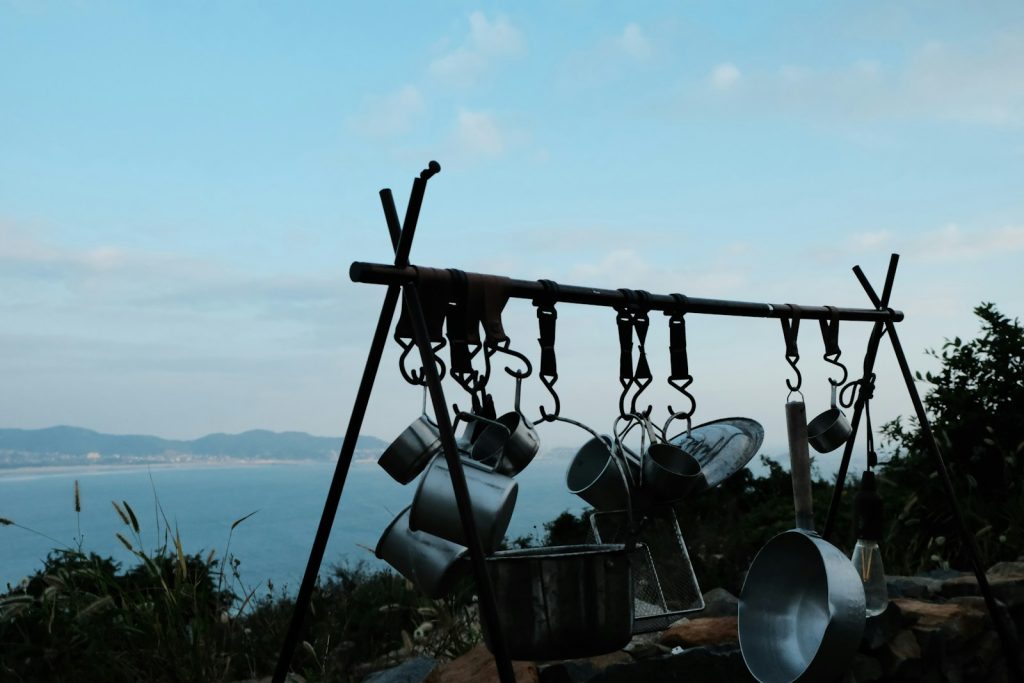
Cooking your own meals while camping can be a fun and cost-effective way to enjoy your trip. Basic cooking equipment includes a camp stove, fuel, a pot and pan, utensils, and plates and bowls. A cooler with ice is also important to keep perishable food fresh.
First Aid Kit
Accidents can happen, even on a short camping trip. A well-stocked first aid kit can help you treat minor injuries and illnesses. Consider including items such as bandages, antiseptic wipes, pain relievers, and insect repellent.
Remember, this is just a starting point for your car camping gear list. Depending on your individual needs and preferences, you may want to add additional items such as chairs, a portable toilet, or a lantern. Take the time to plan and prepare before your trip to ensure a safe and enjoyable experience.
Choosing the Right Campsite
When it comes to car camping for beginners, choosing the right campsite is crucial. A good campsite can make your camping experience comfortable and enjoyable, while a bad one can ruin it. Here are some factors to consider when choosing a campsite:
Location
The location of your campsite is important. Look for a campsite that is easily accessible and not too far from your car. This will make it easier to transport your gear to the campsite. Also, consider the surroundings. Look for a campsite that is in a scenic area with a good view.
Safety
Safety should be your top priority when choosing a campsite. Make sure the campsite is in a safe area and has a low risk of natural hazards such as flooding, landslides, or falling trees. If possible, choose a campsite that is near a ranger station or campground host. This will provide an added level of security.
Amenities
The amenities available at the campsite are also important. Look for a campsite that has access to clean water, restrooms, and showers. If you plan to cook, look for a campsite that has a fire ring or grill. Some campsites may also have picnic tables, which can be useful for eating and preparing food.
In addition to these factors, consider the size of the campsite. Make sure it can accommodate your tent and other gear. Also, check the rules and regulations of the campsite. Some campsites may have restrictions on the number of people or vehicles allowed per site.
By considering these factors, you can choose the right campsite and ensure a comfortable and enjoyable camping experience.
Car Camping Etiquette
When car camping, it’s important to follow basic etiquette to ensure a pleasant experience for yourself and others. Here are some guidelines to keep in mind:
Respect Nature
When camping, it’s important to respect the environment around you. Here are some tips to help you do so:
- Stay on designated trails and campsites to avoid damaging the natural habitat.
- Do not feed wildlife or leave food out, as it can disrupt their natural behavior and even be dangerous for both humans and animals.
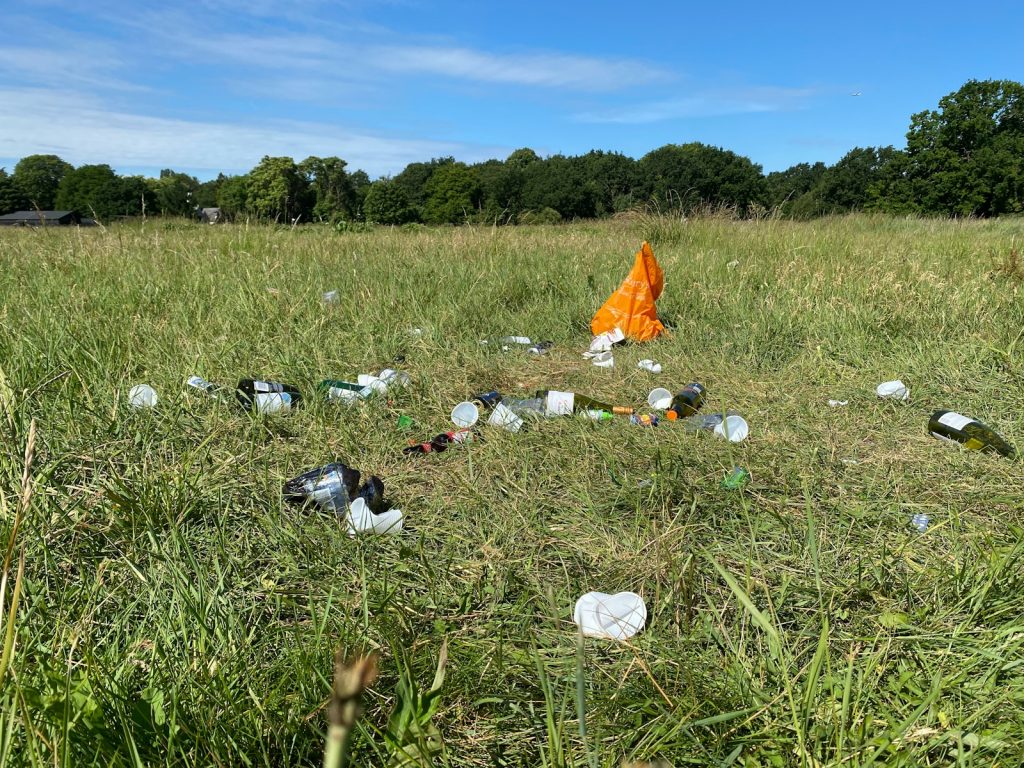
- Do not litter or leave trash behind. Bring a trash bag and pack out all your garbage.
- Avoid using soap or other products in natural water sources, as it can harm aquatic life.
Maintain Cleanliness
Maintaining cleanliness is important for both hygiene and the environment. Here are some tips to help you do so:
- Use designated restrooms and dispose of waste properly.
- Keep your campsite clean and organized. Use a designated cooking area and store food in airtight containers to avoid attracting wildlife.
- Avoid using disposable products whenever possible, such as paper plates and plastic utensils. Bring reusable options instead.
Noise Control
When camping, it’s important to be mindful of your noise level to avoid disturbing others. Here are some tips to help you do so:
- Respect quiet hours and keep noise to a minimum during designated times.
- Avoid using loud equipment, such as generators or speakers, especially during quiet hours.
- Be considerate of your neighbors and avoid loud conversations or music that can be heard outside of your campsite.
By following these basic guidelines, you can help ensure a positive experience for yourself and others while car camping.
Safety and Security
When car camping, it’s important to prioritize safety and security. Here are some tips to ensure a safe and secure camping trip.
Personal Safety
- Always let someone know where you are going and when you plan to return. This can be a friend, family member, or park ranger.
- Bring a first aid kit and know how to use it. It’s also a good idea to brush up on basic first aid skills before your trip.
- Keep a safe distance from wildlife and never approach or feed them. This includes bears, raccoons, and other animals that may be attracted to your campsite.
- Be aware of your surroundings and any potential hazards, such as unstable terrain or poisonous plants.
- Use insect repellent to avoid mosquito bites and other insect bites that can cause illness.
Car Safety
- Park in designated campsites or parking areas. Avoid parking on the side of the road or in areas that are not designated for camping.
- Lock your car doors and keep valuables out of sight. This includes food, electronics, and camping gear.
- Keep a fire extinguisher in your car in case of emergencies.
- Make sure your car is in good condition before your trip. This includes checking the brakes, tires, and fluid levels.
- Bring a spare tire and a tire jack in case of a flat tire.
By following these safety and security tips, you can have a worry-free car camping experience. Remember to always prioritize safety and be aware of your surroundings.
Packing the Car
When it comes to car camping, packing the car efficiently is key to a comfortable and enjoyable trip. Here are some tips to help you pack your car like a pro.
Space Optimization
One of the most important things to consider when packing your car for a camping trip is space optimization. You want to make sure that you’re using every inch of space in your car effectively, while still leaving enough room for passengers and gear.
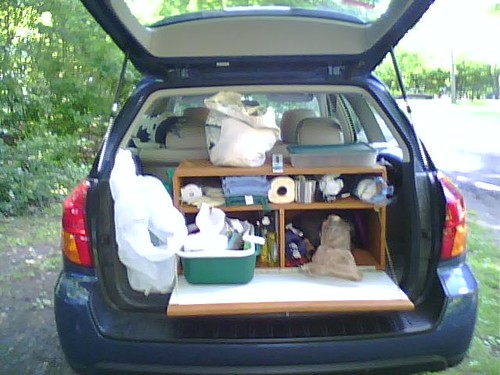
To optimize space in your car, consider using storage containers that are designed specifically for car camping. These containers are designed to fit perfectly in the trunk or cargo area of your car, and they usually have compartments and dividers that make it easy to organize your gear.
Another way to optimize space in your car is to pack strategically. Start by packing your heaviest and bulkiest items first, such as your cooler, camping chairs, and tent. Then, fill in the gaps with smaller items like sleeping bags, pillows, and clothing.
Item Accessibility
In addition to space optimization, it’s also important to consider item accessibility when packing your car for a camping trip. You want to make sure that you can easily access the items you need without having to unpack your entire car.
To make items more accessible, consider using a rooftop cargo carrier or hitch-mounted cargo carrier. These options allow you to store bulky items like camping chairs and coolers outside of your car, freeing up space inside and making it easier to access other items.
Another way to improve item accessibility is to pack items that you’ll need during the trip in a separate bag or container that’s easily accessible from the back seat of your car. This could include items like snacks, water bottles, and sunscreen.
By optimizing space and considering item accessibility, you can pack your car like a pro and enjoy a comfortable and stress-free car camping trip.
Car Camping Meals
When it comes to car camping, meal planning and preparation can make or break a trip. Here are some tips to help you plan, prepare, and store your meals for a successful car camping experience.
Planning
Before you hit the road, plan out your meals for each day of your trip. Consider the number of people in your group, dietary restrictions, and the length of your trip. Make a list of all the ingredients you’ll need and pack them accordingly. It’s also a good idea to plan for a few extra meals in case of unexpected delays or changes in your itinerary.
Preparation
Prep work can make mealtime a breeze while camping. Consider doing some of the prep work at home to save time and space. For example, chop vegetables and fruits, cook meat, and assemble dry ingredients for meals like pancakes or oatmeal. If you’re planning to cook over an open fire, bring along a cast-iron skillet or Dutch oven for easy cooking.
Storage
Proper food storage is essential to prevent spoilage and ensure food safety. Store perishable items like meat and dairy products in a cooler with plenty of ice or ice packs. Keep the cooler in a shaded area to maintain the temperature. Non-perishable items like canned goods, dry pasta, and rice can be stored in a plastic bin or tote. Be sure to label all containers with the contents and date to avoid confusion.
By planning ahead, doing some prep work, and storing your food properly, you can enjoy delicious and hassle-free meals while car camping.
Weather Considerations
When planning a car camping trip, it is important to consider the weather conditions you may encounter during your stay. Here are some key things to keep in mind:
Seasonal Changes
Weather patterns can vary greatly depending on the season and location of your trip. For example, if you are camping in the summer, you will want to be prepared for hot temperatures during the day and cooler temperatures at night. In contrast, winter camping requires a whole different level of preparation, including warmer clothing, sleeping bags, and insulated tents.
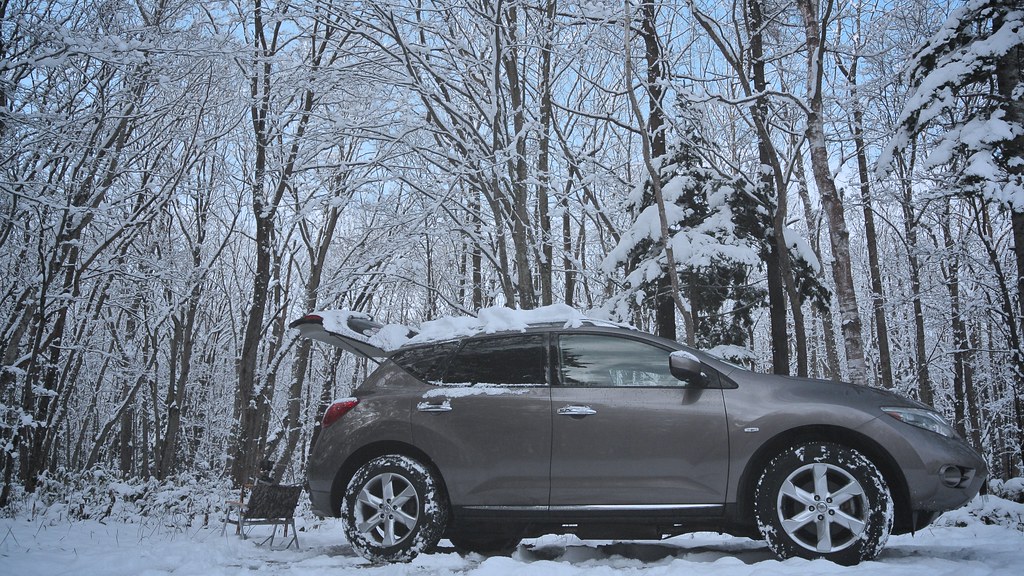
It is important to check weather forecasts before your trip and pack accordingly. Bring layers that can be easily added or removed as needed, and be prepared for sudden changes in weather. Remember that weather conditions can impact your camping experience, so be sure to plan accordingly.
Emergency Preparations
In addition to packing for the expected weather conditions, it is also important to be prepared for emergencies. This includes having a first aid kit on hand, as well as extra food, water, and warm clothing in case of unexpected weather changes or other emergencies.
It is also a good idea to have a plan in place in case of severe weather, such as thunderstorms or heavy snowfall. Be sure to check the local weather forecast before your trip and keep an eye on changing conditions throughout your stay. If you are camping in an area prone to severe weather, consider bringing a weather radio or other emergency communication device.
By taking the time to consider weather conditions and prepare accordingly, you can ensure a safe and enjoyable car camping experience.
Final Thoughts on Car Camping for Beginners
Car camping is an exciting way to explore the great outdoors. It offers a level of flexibility, convenience, and access to remote locations that traditional camping cannot match. By following this comprehensive guide and planning your first car camping trip, you can embark on a rewarding journey in the great outdoors.
One of the best things about car camping is that it is accessible to everyone. You don’t need to be an experienced camper or have expensive gear to enjoy it. With just a few basic supplies and a sense of adventure, you can hit the road and explore all that the wilderness has to offer.
Remember to plan ahead and do your research before setting out on your car camping adventure. Choose a campsite that is suitable for your skill level and interests, and make sure to pack all the necessary gear and supplies. Don’t forget to check the weather forecast and bring appropriate clothing and gear.
When it comes to food, keep it simple and pack easy-to-prepare meals and snacks. And always remember to leave your campsite better than you found it by following the principles of Leave No Trace.
Car camping is a great way to connect with nature, unwind, and create lasting memories with family and friends. So why not plan your first car camping trip today and experience the beauty of the great outdoors for yourself?
Frequently Asked Questions about Car Camping for Beginners
What are the essential items needed for car camping?
When it comes to car camping, it’s important to pack the right gear. Essential items include a tent, sleeping bags, pillows, and a camp stove. You’ll also need a cooler for food and drinks, and a first aid kit in case of emergencies. Don’t forget to bring plenty of water, as well as a map and compass for navigation.
How do I prepare my car for camping?
Before you hit the road for your car camping adventure, it’s important to prepare your vehicle. Make sure your car is in good condition and has been serviced recently. You’ll also want to clean out the interior and make sure you have enough space for your gear. Consider investing in a roof rack or cargo carrier to free up space inside the car.
What is the best way to sleep in a car while camping?
Sleeping in a car can be uncomfortable, but there are ways to make it more comfortable. Consider investing in a car camping mattress or sleeping pad to provide cushioning and insulation. You can also use blankets or sleeping bags to create a cozy sleeping space. If your car has enough space, you can even set up a small cot or hammock.
What should I pack for a car camping trip?
When packing for a car camping trip, it’s important to bring the right gear. In addition to the essentials mentioned above, you’ll want to bring warm clothing, rain gear, and sturdy footwear. Don’t forget to pack a flashlight or headlamp, as well as extra batteries. You may also want to bring a portable camping chair and a book or other entertainment.
Is it safe to camp in a car?
Camping in a car can be safe if you take the right precautions. Make sure you park in a safe, designated camping area, and lock your doors and windows at night. Be aware of your surroundings and keep your valuables out of sight. It’s also a good idea to let someone know your camping plans and when you expect to return.
What are some tips for first-time car campers?
If you’re new to car camping, there are a few tips to keep in mind. Start by planning your trip and choosing a campsite that’s suitable for car camping. Make a checklist of essential items and pack carefully to avoid overloading your vehicle. Be prepared for the weather and bring plenty of food and water. Finally, be respectful of other campers and leave your campsite clean and tidy when you leave.
